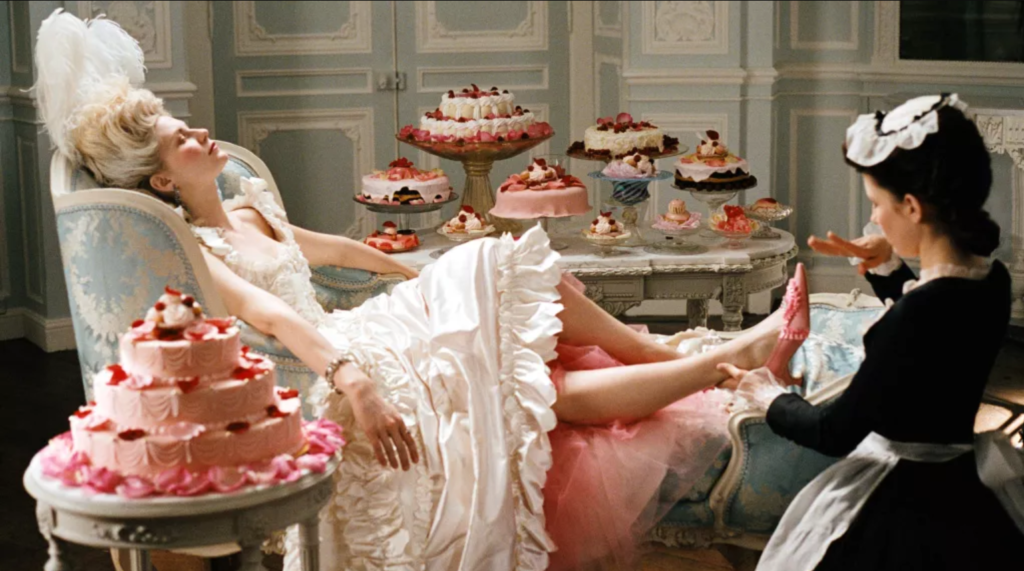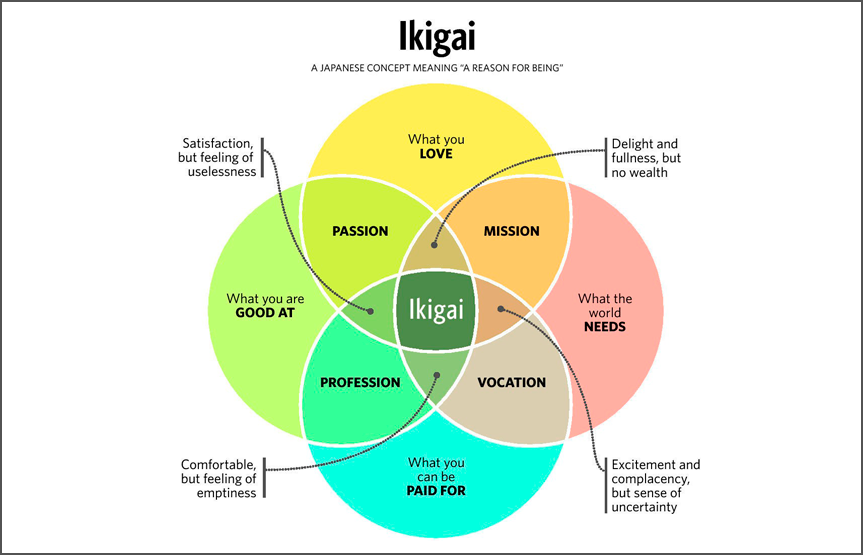
Most of us are familiar with hedonic happiness – the type that’s derived from pleasure and enjoyment. While hedonism might make you feel good temporarily, it won’t change a reality that you’re not happy with. To create the type of happiness that’s enduring, you need to balance hedonic with eudaimonic happiness – the type of joy that comes from engaging in meaningful and purpose-driven activities. Learn more about these two sides of the happiness coin and how you can engage in both. (Estimated reading time: 7-8 minutes)
“Happiness is not something ready-made. It comes from your own action.”
— Dalai Lama
Life is a lot better when we’re happy – our problems become less menacing and our aspirations more achievable. It’s no wonder that everybody wants to drink from the cup of happiness.
People from every walk of life – from poets to philosophers – have tried to decode happiness for the longest time. Positive psychologists characterize it as an emotional state where a person experiences life satisfaction and positive emotions like joy, contentment, and fulfillment.
No matter how you define it, happiness is a pleasant feeling that brings out the best in us. What’s not so straightforward is how to get there. There are many factors involved, including our life circumstances and our overall personal feelings about life.
One thing is for sure: the pursuit of pleasure does not always lead to happiness. A glass of wine or a weekend trip to Vegas might make you feel good temporarily, but it won’t last, and it certainly won’t change a reality that you’re not happy with.
So, how do we experience enduring happiness rather than one that is fleeting? There are two sides to the happiness coin: hedonic and eudaimonic. We need a balance of both to have an overall sense of wellbeing that stands the test of time.
Hedonic happiness: getting past sex, drugs, and rock ‘n’ roll

Most of us are familiar with hedonic happiness. It’s the type that’s derived from pleasure and enjoyment and is mostly sensory in nature. In our consumer-driven society, it’s championed as the ultimate form of achievement.
TV commercials, magazines, and billboards display images of people living postcard-perfect lives. Whether it’s a smiling family enjoying a vacation together at a resort, or a couple decked out in designer clothes sharing a glass of champagne in a decadent lounge, these images get imprinted in our minds as the sole path to experiencing the ‘good life’.
The idea and practice of hedonism date back many millennia. Ancient Greek philosopher, Aristippus, taught that the primary purpose of life is to maximize pleasure in the present moment and not trouble ourselves by toiling for future gain.
We find people who pursue hedonic pleasures to be wild and carefree, and perhaps even prodigal. Think of the rock star type – the quintessential hedonist whose extreme wealth and fame allow them to indulge in their insatiable hunger for pleasurable pursuits and material possessions.
In the movie Rock of Ages, famed rock singer Stacee Jaxx, played by Tom Cruise, brought this archetype to life. Jaxx is known for being an egotistical, unreliable bad boy. On some level, he knew he was unsettled and that music was his salvation. “I’m a slave to rock ‘n’ roll. I am searching for the perfect song…the perfect sound that will make you wanna live forever,” he said.

A bonafide rock star, it wasn’t until he reached the peak of his career and fell in love that he realized how his wild antics, relentless pursuit for pleasure, and selfish ways were detrimental to his career and health.
All of us have a bit of Stacee Jaxx in us. We have an appetite for sensory gratification, whether that’s a scoop of ice cream or the sensual touch of a lover. And just like Jaxx, we’ll reach a threshold where hedonic happiness just doesn’t seem to make the cut anymore.
Those who don’t listen to their inner voice stumble on the path of self-destruction that involves addiction, bingeing, and compulsive behavior. They are deluded into believing that the single-minded pursuit of intense pleasure will keep them in a perpetual state of euphoria and shield them from the unsavory realities of life.
No matter how many riches we accumulate, we can’t escape the yearning of our souls that want so much more than just pleasure. Our souls seek depth, meaning, and purpose – a profound form of happiness that includes the healthy pursuit of something that goes beyond the mundane themes of everyday life.
Eudaimonic happiness: worthy pursuits that elevate and empower

Extreme hedonists feel like bottomless pits because they experience the “hedonic treadmill,” a term that indicates a baseline that people return to no matter what happens in their lives. So, when they engage in fleeting pleasures, their mood will improve for a short time before returning to their happiness baseline.
The good news is that certain pursuits can cause us to hover above our happiness set point. We can stay in this zone by engaging in eudaimonic activities – meaningful activities like hobbies or volunteer work. It’s associated with investing ourselves in personal growth, long-term goals, and doing our part to contribute and improve the lives of others.
Eudaimonia is a Greek word that can be broken down into “eu” (“good”) and “daimōn” (“spirit”). These words translate to prosperity or flourishing. Like hedonism, the idea dates to the times of the Ancient Greeks, where philosopher Aristotle claimed that the secret to happiness was living a life of virtue and human goodness, striving to be our best selves.
This is backed by more recent psychological theories such as Maslow’s Hierarchy of Needs, which states that self-actualization is the ultimate goal in life. Psychologist Carol Ryff added to these theories by developing a model of Psychological Well-being.
According to her model, there are six crucial elements that are the building block of eudaimonic happiness:
- Self-acceptance
- Autonomy
- Personal growth
- Environmental mastery
- Purpose in life
- Positive relationships

The ikigai philosophy, one of the pillars in the Japanese philosophy of happiness, mimics the values of the Eudaimonic model. The Japanese verb “iki” means “live”, and “gai” literally translates to “reason”.
It speaks to specific states and activities in which we can be totally immersed at that moment and which puts us in a state of creative flow and the continuous development of skill. In this state, work becomes a source of joy instead of drudgery and labor.
For ikigai to work, we must attach some value to it and find purpose in what we’re doing. The need for applause and praise shouldn’t drive us. You may paint a portrait for the sheer enjoyment of the activity rather than with the goal of selling it to a patron. You could write a book with no intention of publishing it and still love the process.
Ikigai not only applies to professional pursuits but to rituals. Well-known Japanese rituals such as the tea ceremony are carried out with care and attention with the objective of reaching ikigai.
Unfortunately, most people fail to see the value of Eudaimonic Happiness. They’ve become accustomed to momentary pleasure that satisfies their shallow whims. It’s also tough to exercise self-control and discipline that’s often required for Eudaimonic-oriented activities.
Limiting immediate gratification in favor of wholesome joy may be perceived as ascetic and representative of a life characterized by deprivation. But you don’t have to live like a monk to experience eudaimonic happiness. What you do need to do is to find the right mix of both types of joy.
Striking the happiness balance: balancing hedonic and eudaimonic happiness

It feels unnatural to give up the things that add spice to our lives because it’s not how we are built. In fact, the inability to enjoy simple pleasures is one of the signs of certain mental health conditions. When done in moderation, hedonic pleasures boost your sense of wellbeing.
On paper, it’s easy to separate hedonic and eudaimonic happiness when in fact, they work hand in hand. It took me a while to understand that the two needn’t conflict with one another. I struggled to enjoy the occasional treat because I preferred a more temperate (borderline restrained) lifestyle.
I felt it was wrong to partake in things that seemed frivolous to me, and I looked down on anyone who did – whether it was a diner filling their plate with calorie-rich foods at a buffet, or a drunk scantily-clad woman dancing on a table at a nightclub. While this isn’t exactly classy behavior, I was more repulsed and judgmental about it than others were.
Later, I realized my strong reaction was an indication of something I was suppressing. The qualities I condemned represented shadow attributes that I had buried within me. The people-pleasing part of me sought validation from others by playing the role of “the good girl.” I also believed it was wrong for spiritually oriented people to give in to a hedonistic life.
Many spiritual and religious people like nuns, monks, and minimalists are perfectly happy with little to no sensory pleasures, but it’s not something that most people can do without. The key is finding the right amount of hedonism and knowing where to draw the line.
In his book, Buddha and the Badass, author Vishen Lakhiani writes, “We don’t have to choose between Buddha or badass. The idea is to be both. Indeed, sometimes the only way to be effective at one is to master the other.” By deriving happiness from various sources, you can be both Buddha-like and a Badass.
Here are some things I did to find the right balance in my everyday life, which might help you too.
Five ways to boost eudaimonic happiness:
- Develop a healthy mindset and practices such as mindfulness and gratitude.
- Continually work on your personal development and self-acceptance.
- Live a life driven by your purpose and values.
- Invest in developing your skills and engage in creative hobbies.
- Cultivate genuine and positive relationships that feed you.
Five ways to increase hedonic happiness:
- Define what pleasure means to you and make a list of activities associated with it.
- Consciously plan and time-block periods of enjoyment into your schedule.
- Savor everyday pleasures by using all your senses and giving them your full attention.
- Release any guilt that’s preventing you from getting the most out of your experiences.
- Find the right company to share your experiences with, whether it’s a friend, partner, or family member who can make magnify the fun.
Happiness is always available to you. While it may seem more reachable at some times than others, it’s always there. You don’t need to earn it or prove your worthiness. Everything you need to feel good is within you right now, at this moment, just as you are.
All my best on your journey,
Seline

Question for you: Do you currently have more hedonic or eudaimonic happiness in your life? Is there a need to bring more balance between the two?
Did you like this post? Sign up below, and I’ll send you more awesome posts like this every week.

Beautiful post.
In youth we pursue more pleasure
and later more happiness.
I believe in more balance between the two.
Thank you Seline.
Thank you John! I appreciate you sharing your thoughts!
This is such a great blog! I didn’t know about this concept and the underlying ideas here. This was a great eye-opening blog and I am glad I found it. You have presented this in a great easy to follow way that makes it easy and fun to read.
I personally need to better balance both of these because happiness in general is not something I enjoy much of right now. Thank you Seline. 🙏